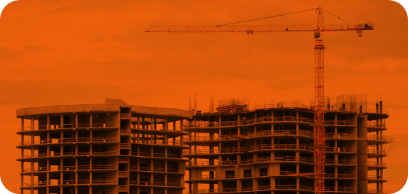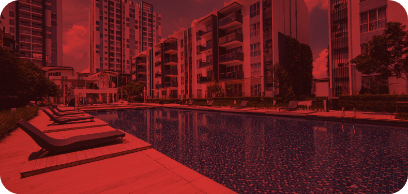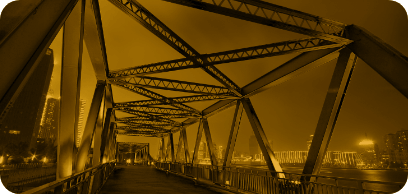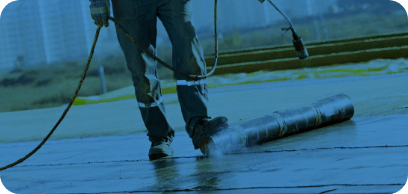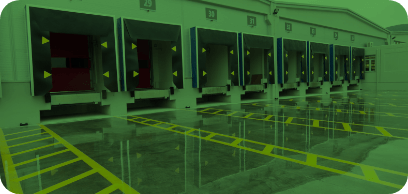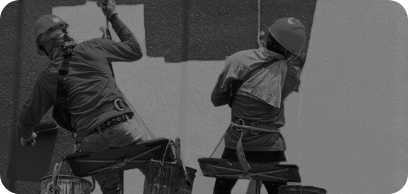CASE STUDIES
The beauty of Nippon paint is that our coatings look good while being highly practical. Explore the Case Studies below to learn how to maximise our product benefits.
When it comes to the planning process in pre-construction, waterproofing is often on the lower priority or excluded entirely, other areas such as design specifications and site preparation become the main focus of the planning process.In Malaysia, we live in a climate that has constant thunderstorms, rainy weather and frequent monsoon seasons which increases the risk of damage to surfaces in the long run, rapidly deteriorates the building's aesthetics and the overall quality of the interior and exterior surfaces of the building. Keeping this in mind, waterproofing is an investment that would benefit property developers and owners. In the long run, constant repairs and regular maintenance will be more costly and ineffective as opposed to preventing these issues in the first place. Waterproofing improves indoor air quality by preventing moulds and mildew To build a strong waterproofing foundation for buildings, regardless of building typography,the use of proper products and coatings systems is a definite recommendation. Waterproofing is essential to help reduce moisture levels in the interior surfaces, prevent water damage and structural breakdown across common surfaces such as walls, ceilings, basements, floors, rooftops and bathrooms.The lack of proper waterproofing systems will often cause recurring issues that may occur by water leakage that forms cracks, blisters and moulds which may cause lead to respiratory problems caused by the growth of mildew and spores. Effective solutions for every surface, Nippon Paint has you covered Preventing water breaches, protects the building's structure by keeping the interior and exterior areas dry and safe. In order to do this effectively, there is great important to select quality, durable waterproofing solutions. It is important to ensure that the right waterproofing solution is applied for the specific surface to ensure an effective system throughout the building. Nippon Paint's waterproofing solutions are backed by industry market research and technology, having worked with its counterparts in China, further driving innovative solutions for various surfaces. These solutions have contributed to various iconic projects and landmarks across the globe such as the Hong Kong-Zhu hai-Macau Bridge, the Beijing-Shanghai high-speed train, the Shanghai Tower and the Three Gorges Dam. Waterproofing for roof protection For new buildings, roofs with unique detailing and is made up of different materials can be a complex surface to waterproof. For such surfaces, it is recommended to opt for Nippon LM PUSIL - a 1k advanced hybrid technology polyurethane-silicone liquid waterproofing membrane. Moisture cured to form a seamless, UV-durable, protective waterproof and decorative membrane, Nippon LM PUSIL has excellent weatherability and is resistant to sun, rain, wind. Additionally, it negates negative water pressure that may be caused by water ponding at roof top or gutter. Its microstructure keeps water out but allows water vapour to escape, thus preventing the formation of blisters. For older buildings, roofs with larger surface areas of concrete flat roofs with poor surface conditions, proper waterproofing solutions are necessary to prevent unwanted issues. Nippon SM BITUMEN M4000 waterproofing sheet membranes showcases properties such as excellent mechanical strength, elasticity and durability. This economic yet effective waterproofing solution is designed to be placed on top of concrete slabs and is ideal for medium to large RC roof (exposed and inverted roofs). Waterproofing for wet areas The application of effective waterproofing solutions is critical to minimise leakages in common wet areas such as bathrooms, kitchens and swimming pools. Products such as Nippon CM Flexible, a two component, flexible, green label and SPAN certified, acrylic polymer modified cementitious waterproofing coating, are high resistance to both positive and negative water pressure. This solution is made to strengthen the structure through anti-carbonation and anti-chloride ion diffusion protection coatings and provides sufficient adhesion to wet surfaces and green concrete, which is easily applicable to such surfaces. Waterproofing for basements Common structural issues are usually caused by recurring water leakages in areas such as basements. In order to prevent such underlying issues for occurring, an effective waterproofing system needs to be implemented from the get-go, with products such as Nippon SM Self Adhesive, a polymer modified self-adhesive bitumen waterproofing membrane, which is laminated onto a tough high-density polyethylene (HDPE) file on one side (facing up) and a silicone release file on the other side (facing down). Nippon SM Self Adhesive conforms to the requirement of B58102, and is designed for below ground waterproofing membrane. Functioning as a waterproof and vapour proof protective layer, Nippon SM Self Adhesive has excellent adhesion to both vertical and horizontal surfaces, with good tear and puncture resistance. This waterproofing membrane is easily applicable via cold application, self-adhesive methods. Note: Waterproofing products may vary depending on the design and requirements of each basement. Our Work Nippon Paint has led various waterproofing projects for both new buildings and old buildings such as Amber Court, Genting Highlands, Gleneagles Hospital (Penang), Five Stones Condominium, Saujana Golf & Country Club (Selangor), Institute Latihan DBKL, Pavilion Elite and Residensi Rampai II in Kuala Lumpur. Contact Nippon Paint Malaysia for Your Waterproofing Needs Today. Customer Careline: 1-800-88-2663 E-mail: customercare@nipponpaint.com.my
Achieving effective weatherresistance surfaces is not as easy as it seems. Lack of knowledge leads to many misconceptions, resulting in poor waterproofing outcomes. Opting for a quick fix when a problem occurs may lead to higher repair costs in the long run. As such, property developers, construction professionals and homeowners should consider waterproofing as a long-term investment to safeguard their spaces as and when such issues arise. Waterproofing is a key component throughout any construction process to ensure that the building remains structurally intact and maintains its aesthetic look and feel for years to come. With this, understanding waterproofing basics including differentiating the various types of products to be used, identifying underlying problems and areas that require waterproofing is essential. Using proper products and suitable waterproofing systems will prevent recurring issues such as dampness and leakage that can deteriorate a building’s aesthetics or leading up to more severe problems such as structural damage over time. Choosing to repair the recurring damages from the cracks, blisters and mould caused by damp surfaces will incur an increased cost compared to if proper waterproofing were installed once and for all in the initial construction stages. Waterproofing provides a sense of security for building occupants and homeowners alike; it provides a solid foundation for any upcoming construction work and protects occupants from adverse health effects due to the growth of mould and mildew that may arise from excess moisture in the air. COMMON MISCONCEPTIONS A common misconception of waterproofing is to use a one size fits all approach, implementing one waterproofing system throughout all spaces at home. In fact, different building typologies require different waterproofing solutions throughout various spaces within the building (e.g. kitchen, bathroom, swimming pools, rooftops, etc.) and may require different waterproofing systems as well. When taking into consideration waterproofing solutions for respective spaces, it is essential to opt for holistic coatings solutions that are suitable for each type of surface. WHAT TO CONSIDER BEFORE WATERPROOFING Gutters are susceptible to cracks, buckling and leaks, as such, waterproofing efforts will go to waste without well-maintained gutters. Prior to waterproofing any spaces, regular inspection of the guttering system is mandatory to ensure that the brackets are not rusty. Proper sealants should be used around the joints to ensure that any unwanted leakage does not occur, as it may affect the overall quality of the waterproofing solutions applied. When assessing large surfaces areas such as rooftops, a thorough inspection must be carried out around the flashing (the metal used to seal bends and joints around vents), skylights and chimneys to ensure little to no damage. If tiles or shingles are missing, cracked or have deteriorated in quality, they should be replaced or fixed prior to the waterproofing process. As rooftops, especially flat roofs are most susceptible to damage, they must be properly cared for and the tiles should be securely in place. Otherwise, it may lead to water leakage into the building which may lead to other issues. Waterproofing may be needed, such as by using a spray-on foam insulation underneath the roof. WATERPROOFING DO’S 1. A Sturdy Structural Design A good, sturdy design and structure will support any waterproofing system because this will prevent the accumulation of water or moisture in the area. For example, the more quickly a cladding system can dissipate water, the greater its capacity to resist water intrusion. However, where there is complicated detailing such as unnecessary plane changes or complicated patterns, it will be less resistant to water leakages. For example, the design of a retaining wall in a residential area that is prone to flooding should avoid unnecessary detailing and the use durable materials such as concrete and marinegrade plywood. The waterproofing solution should give vertical protection against perched water as well. Designing a shoring wall system will require even higher level of performance and the solution should also be compatible with cast-in-place poured concrete and various shoring applications, while protecting against nuisance water, contaminated vapours and methane gas. 2. Selecting Durable Materials Sealant failures are common hence regular maintenance is necessary to prevent water intrusion within the failure of sealant joints. Aside from this, holistic waterproofing solutions should be put into place. Selecting appropriate materials for the cladding, flashing and detailing process are critical to ensure that it serves its purpose in the long run in providing effective waterproofing solutions for respective spaces. Components that are not easily maintained should have a service life equal to the overall cladding system. Factors such as cost, durability, and appropriate detailing requirements should be carefully evaluated when selecting a flashing. Plastic and rubber flashings are popular for their lower initial cost; however, stainless steel and copper flashing are more durable despite the higher cost. WATERPROOFING DON’TS 1. Don’t Assume A One Size Fits All Approach When developing plans for waterproofing solutions and selecting the appropriate products, it is essential to determine the exposure conditions because this will influence the requirements of the overall waterproofing system performance of respective spaces. Materials or cladding components shouldn’t exceed the performance limits. For example, a cladding system within a sloped wall application will have more skyward exposure. The moisture loads will be higher as it will be exposed to more sunlight and rainwater. If the material used is that of commonly used for vertical walls, the performance limits will be exceeded. With vertical walls, the pattern of wetting during a rainfall event is typically concentrated at the top of the wall and at the corners. In a sloped application, the entire surface will be exposed to rain. Thus, instead of opting for conventional methods of waterproofing walls, a sloped wall assembly should be treated like a roof from a waterproofing perspective to ensure minimal leakage and recurring issues. Waterproof performance relies on appropriate detailing and proper integration of system components such as weather resistive barriers, flashings, sealants and coatings. The use of incompatible materials can prevent otherwise appropriate details from functioning as intended. Do-it-yourself projects with a selection of unfamiliar materials or material combinations must be avoided. Professional consultation when making product selections is recommended to ensure that suitable waterproofing solutions are applied accordingly to the requirements of each type of surface. NIPPON PAINT WATERPROOFING Selecting quality, durable waterproofing solutions prevents breach of water and at the same time, protects the building’s structure by keeping interior and exterior areas dry and safe. It is important to ensure that the right waterproofing solution is applied for the specific surface to ensure an effective system for the building. Nippon Paint’s waterproofing solutions are backed by industry market research and technology, having worked with its counterparts in China, further driving innovative solutions for various surfaces. Nippon Paint has contributed to various projects such as iconic landmarks across the globe including the Hong Kong-Zhuhai-Macau Bridge, the Beijing-Shanghai high-speed train, the Shanghai Tower and the Three Gorges Dam. With the wide range of solutions offered, Nippon Paint’s waterproofing solutions can also address specific waterproofing problems. NIPPON LM PUSIL, for example, has excellent waterproofing performance with high resistant to both positive and negative water pressure. NIPPON LM PUSIL reacts fast with the moisture in the atmosphere to form an elastomeric seamless waterproof membrane, with a one-hour early rain resistance. It can be applied on various substrates and under conditions such as cold days and on damp surfaces. The qualities include: Cost effective wet on wet application, fast through cure and saves time Excellent workability (subject to environmental conditions) Resistant to standing water Early rain resistant Excellent adhesion on most substrates High solar reflectivity index Single liquid component and ready to use Excellent elasticity and tensile strength 100 per cent reactive materials, high build coverage Non-shrinkage Excellent weathering and UV stable Non-hazardous, solvent free and isocynate free Extremely low volatile organic compound (VOC) and odourless Contact Nippon Paint Malaysia for Your Waterproofing Needs Today: Customer Careline: 1-800-88-2663 E-mail: customercare@nipponpaint.com.my Website: https://professional.nipponpaint.com.my
Water is an essential source of life and prosperity and plays a vital role in maintaining our health, grow our food or in managing the various aspects of life.For the construction industry, water is a vital component as it is required in the production process for many building materials such as concrete, steel and paint. However, water is also considered as a major threat during construction projects. Water seepage and leakage – due to environment condition or internal piping system – can lead to many arising issues ranging from wood warping, metal fabrication turning to rust, mould growth, bubbles forming under the paint and in worst cases buildings failures, all of which affect the structural integrity, as well as jeopardizing the safety and health of the building occupants.The phrase “prevention is better than cure” says it best; buildings – from private homes to commercial properties, both new and old – need to be protected against water ingress to avoid expensive and irreversible damages. Building owners, developers and architects are now paying closer attention when designing the project masterplan, going through every detail including fixtures and fittings with a fine-tooth comb to eliminate any possibility of water-related issues during and after construction. Even so, this could not guarantee long-lasting protection throughout the lifespan of the building. Importance Of Waterproofing When it comes to safeguarding a building against water ingress, there are two possible solutions – damp proofing and waterproofing.Damp proofing is a coating, usually asphalt-based, that is either sprayed on or hand applied to the outside of the wall to keep out soil moisture, whereas waterproofing is designed to specifically keep out both moisture and liquid water. While both are commonly used solutions, waterproofing is the preferred choice as it provides complete protection from unwanted breach of water in both interior and exterior areas of the building. There are three types of waterproofing materials including liquid applied, cementitious and sheet type waterproofing membranes. Amongst these, the most common and widely used solutions are the liquid applied and sheet type waterproofing membrane. Some owners and contractors often seek a bargain when comparing waterproofing materials without fully understanding that different membranes can produce different results and may not be suitable for their site conditions. This eventually results in inadequate protection against water ingress, not to mention incurring further costs to hire contractors to assess for water leakage, and buying exorbitantly-priced building materials to repair any water damaged area. In recent years, expensive remedial work to correct failures in below-grade waterproofing systems has motivated owners and designers to seek high-performance and reliable waterproofing solutions. Riding on the current market trend and driven by technology and innovation, Malaysia’s No. 1 coating solutions provider Nippon Paint, has been developing new waterproofing solutions to enhance the durability of buildings, and homes - suitable for different types of surface from floors, walls, roof to ceilings, amongst others. Selecting quality, durable waterproofing solutions prevent breach of water and at the same time, protect the building’s structure by keeping interior and exterior areas dry and safe. It is important to ensure that the right waterproofing solution is applied for the specific surface to ensure an effective system for the building. Nippon Paint’s waterproofing solutions are backed by industry market research and technology, having worked with its counterparts in China, further driving innovative solutions for various surfaces. Nippon Paint has contributed to various projects such as iconic landmarks across the globe including the Hong Kong-Zhuhai-Macau Bridge, the Beijing-Shanghai high-speed train, the Shanghai Tower and the Three Gorges Dam. Protect Your Building With Nippon Paint's Proven Solutions NIPPON LM PUSIL This solution provides excellent waterproofing performance with high resistance to both positive and negative water pressure. Non-hazardous, solvent-free and isocynate-free with extremely low volatile organic compounds (VOC), Nippon LM PUSIL reacts fast with the moisture in the atmosphere to form an elastomeric seamless waterproof membrane, with a 1-hour early rain resistant performance. Ideal for the unpredictable Malaysian thunderstorms and frequent monsoon seasons, Nippon LM PUSIL can be applied on various substrates and under conditions such as cold days and on damp surfaces. Suitable Applications: RC flat roofs (new and old) Metal roof Roof terraces Balconies and walkways Cool roofs Podium decks and pool Fountains and water features decks Exterior walls Interior walls Advantages: Excellent waterproofing performance with high resistance to both positive and negative water pressure Wet-on-wet application, fast through cure and save time Excellent workability – independent of environment conditions Resistant to standing water Excellent adhesion on most substrates High solar reflectivity index Excellent elasticity and tensile strength Excellent weathering and UV stable Low VOC and odourless Non-shrinkage 100% reactive and high build NIPPON LM POLYUREA SA-7102/SA-7103 This solution is one that provides rapid results, with 100% solids, elastomeric, spray-applied pure polyurea system designed as a seamless and highly durable waterproofing and protective coating. Nippon LM Polyurea SA-7102/SA-7103 is also formulated to spray with plural spray machine, which prevents human application errors. Due to its high mechanical and durable characteristics, it is suitable for various heavy-duty applications. Suitable Applications: RC roof Railways and viaducts Power plant Podium deck and driveway Water theme park and pool Sewage and waste water treatment plants Tanks and pipe lining Advantages: 100% solid, zero VOC, environmentally-friendly Immediate thickness build-up and waterproofing in seconds, and fast return to foot traffic service in minutes (up to 30 minutes) High elasticity Excellent crack bridging for both static and dynamic cracks Excellent chemicals (water, oils, alkali, diluted acids) resistance Good corrosion resistance Skid resistance Easy and fast apply on complicated surface (>1000m2/day) Seamless and water-tightness Anti-root Elastic sound absorption and noise reduction NIPPON LM POLYASPARTIC HA7205 This solution is a two component, user-friendly, weather and UV resistant, liquid-applied pure polyaspartic seamless waterproofing membrane. Nippon LM Polyaspartic HA7205 provides an elastic and at the same time hard surface for applications, subject to the stress of wear and tear, impact and chemical exposure. It is also 100% en vironmentally friendly. Suitable Applications: RC roof slabs Power stations Water theme park Car park decks Swimming pools Ponds and water tanks Sewage treatment plants The service life of a structure – as well as the occupants’ comfort and peace of mind – depends on its integrity. Therefore, it is vital to choose high-performance and reliable waterproofing solutions for your building. Advantages: High elasticity Crack bridging Extremely good weathering resistance Good chemicals (water, oils, alkali, acid) resistance Non-yellowing; promotes good colour retention, gloss retention and stable Good corrosion resistance Easy application by brush, roller, trowel and air-less spray Seamless application Elastic sound absorption and noise reduction Customer Careline: 1-800-88-2663 E-mail: customercare@nipponpaint.com.my Website: https://professional.nipponpaint.com.my
Do not be penny wise and pound foolish when it comes to waterproofing your building. It may sound like an unnecessary and negligible task but reports have shown that waterproofing accounts for only 1% of a building’s construction cost but when ignored, can be responsible for up to 90% of the cost of damages due to leaks! When a proactive approach is not taken to address this issue early on, it will result in structural breakdowns, leaks and mould leading to expensive rectification works. This was one of the observations during site visits for the recently concluded EdgeProp Malaysia Best Managed and Sustainable Property Awards 2020 organised by EdgeProp Malaysia in partnership with Nippon Paint Malaysia. So what happens when leaks are left unchecked over time? Besides damaging the paint on the walls and the wall itself, it will also cause ponding on ledges and sills leading to stains, delamination and fungi growth, thus creating health hazards for building occupants. Malaysia’s hot and humid climate encourages the growth of microorganisms where there is trapped moisture. Fungi and other invisible enemies in the air can affect the health of those residing in the building as they can cause respiratory illnesses such as asthma attacks and other irritations and infections, especially for those who are more vulnerable like young children and the elderly. Furthermore, stagnant water from water leaks is also the perfect breeding ground for mosquitoes leading to illnesses such as dengue fever. On top of that, ponding or pooling of water is especially dangerous when you have young children and the elderly moving about as the slippery surface can result in unwanted falls. Challenges In Waterproofing Waterproofing is a technical task that requires experts to make sure the solutions are applied in a correct manner. Without the correct surface preparation and application method, the waterproofing process might be jeopardised and cause further damage to the building. For instance, to waterproof concrete walls or floors you must first ensure that the surface is clean and dry. Old paint must be removed from the surface and the area needs to be cleaned to ensure no dirt is left behind. If necessary, a warm water and soap mix can also be used to scrub off dirt from the walls and floors. Holes must be patched using hydraulic expanding concrete mix and a minimum of 24 hours of drying is needed before any waterproofing work is done. It is also important to distinguish the difference between damp-proofing and waterproofing. Damp-proofing keeps moisture out of the surface while waterproofing keeps both liquid and moisture at bay. When in doubt, get professional help. Waterproofing solutions provider such as Nippon Paint strives to help by providing its expertiseand advice in the pre, during and post-waterproofing process. Solutions Having worked closely with their counterparts in China with a long standing presence in the waterproofing industry backed by knowledge and evolving technology, Nippon Paint has contributed to the completion of several iconic projects such as the Hong Kong-Zuhai-Macau Bridge and the Beijing-Shanghai High Speed Train. Over the years, Nippon Paint has developed systems and products ranging from liquid applied, cementitious and sheet type of waterproofing membranes as well as accessory items for applications that require special care. Its myriad selection of waterproofing solutions for above ground wet areas and below ground structures bears testament to its efforts as the total coating solutions provider. To specifically tackle leaks from complicated roofs that have lots of detailing, Nippon Paint offers several solutions. One is the Nippon LM ACR -- a breathable liquid applied waterproofing membrane which is air cured to form a seamless UV-durable, protective waterproof and decorative membrane. The Nippon LM ACR can also be used to prevent blistering issues. Another solution for complicated roofs is the Nippon LM PUSIL which is also a liquid applied waterproofing membrane with an additional feature to treat rising damp in walls. It is resistant to rain wash-out and possesses excellent weather durability. Nippon LM PUSIL can be applied on various substrates and under conditions such as cold days and on damp or wet surfaces. For simple roofs without much detailing, the Nippon SM BITUMEN S3000/S4000 – a sheet formed waterproofing membrane, exhibits excellent mechanical strength, elasticity and durability. It is designed to be placed on top of concrete slabs, providing an economical efficient waterproofing solution to basements and concealed roofs. These waterproofing solutions do not need complicated and expensive machinery to execute and are recognised for their good weather durability, attractive colours and chemical resistance. They can be applied to obtain the desired specified thickness in a single trowel application. Depending on the type of surface and condition of the area, getting an expert to advice on the suitable waterproofing methods and surface preparation is vital so that the process can be done in the right way from the very start. Some Waterproofing Methods Liquid-Applied Membrane Method This liquid-based and fully bonded, monolithic coating is suitable for many roofing and waterproofing applications. It cures to form a rubberlike elastomeric waterproof membrane and can be applied on various substrates such as concrete and asphalt. Cementitious Coating Method This cement-based modified with acrylic polymers method makes use of the polymers to improve elastic and adhesion properties while the cementitious materials provide the tensile strength. The coating prevents water ingress and makes the coating elastic. Sheet-Type Based Membrane Method One of the most common types of sheet-based membranes is the bituminous waterproofing membrane. Arriving in the form of rolls, it has to be unfurled and laid on a firm surface before it is stuck to the substrate with a hot tar-based adhesive using blowtorches. Consequences Of Not Waterproofing Your Building Structural breakdown Ponding at ledges and sills Stains, delamination and fungi growth Damages external wall painting Respiratory illness Slippery surfaces which can cause falls Customer Careline: 1-800-88-2663 E-mail: customercare@nipponpaint.com.my Website: https://professional.nipponpaint.com.my
Waterproofing is often on the lower priority or excluded when planning for the pre-construction process, focusing on other factors such as design specifications and site preparation. To add on, waterproofing is also one element that increases the overall construction budget more often than not due to the complexities of the process. But living in a country that is susceptible to constant thunderstorms, rainy weather and frequent monsoon seasons increases the risk of damage to surfaces in the long run, deteriorating the building’s aesthetics as well as the quality of the interior and exterior surfaces of the building. Waterproofing is an investment that is surely worthwhile, benefitting property developers and owners in the long run. Why Is Waterproofing Necessary? The use of proper products and Coatings systems will build a strong waterproofing foundation for buildings, regardless of building typography, protecting surfaces from risk of long-term damage. Waterproofing is essential to help reduce moisture levels in the interior surfaces, preventing water damage and structural breakdown across common surfaces such as walls, ceilings, basements, floors, rooftops and, bathrooms. Insufficient waterproofing systems often lead to recurring problems caused by water leakage including cracks, blisters and mould – which produces mildew and spores that may potentially lead to respiratory problems in individuals. In the long term, repairing and regular maintenance for such problems will be more costly and ineffective than preventing these issues in the first place. A Waterproofing Checklist Waterproofing system and coatings varies for different buildings typologies, depending on the conditions and areas the buildings are situated during the pre-construction phase. Whether restoring older buildings, or working on new projects, it remains critical to take into account these considerations to protect structures for the long run: Assess the current underlying conditions and issues of the buildings prior to the development and construction process Before starting work on implementing waterproofing systems, a thorough assessment is required to ensure the correct waterproofing solutions are applied according to the nature of the premises. There are various types of waterproofing membranes (i.e cementitious membrane, liquid membrane sheet membrane amongst others) to be considered according to building specifications, complemented with an effective design which ensures optimum feasibility of the solutions. For existing structures which require certain waterproofing solutions to be applied, prior repair or maintenance work may be necessary to ensure that the waterproofing system when applied, is effective. Identify areas that require waterproofing systems While areas such as the bathroom, rooftop, kitchen and swimming pools typically require waterproofing, other areas such as balconies and basements also require end-to-end waterproofing systems to adequately protect these structures from water damage. Waterproofing areas that are made out of concrete such as balconies and basements creates an added level of protection, preventing cracks from forming and protects the space from direct UV rays which are detrimental to the longevity of the area. Waterproofing also prevents the growth of mould and mildew, which consequently leads up to other recurring structural issues. Durable solution is key Waterproofing solutions are a long-term commitment for any structure, providing a strong and sturdy foundation, and thus it is important to ensure that the selected waterproofing system is durable. Weigh the pros and cons upon thorough assessment of the premise to ensure that the solution chosen is long-lasting, cost-effective, but also minimises the need for maintenance or repair works over time.


